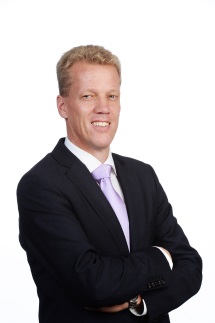Approximately one in eight medical specialists in the Netherlands suffers from burnout and an increased risk of burnout. This figure is even higher for AIOS (Artsen In Opleiding tot Specialist) Specialist Registrars. This means that in an average hospital, around 25 medical specialists suffer from burnout or related symptoms. What are the implications for patient safety? This question and other issues were the focus of research conducted by Mr Erik Drenth MSc (for healthcare insurance provider VvAA) as part of his executive Master’s Degree in Risk Management at the University of Twente.
Burnout consists of three core elements: (1) extreme exhaustion, (2) cynicism and detachment from work, and (3) reduced personal competence. A systematic review of international scientific research studies showed a correlation between burnout in (young) medical specialists and an increased risk in respect of patient safety. In other words: doctors suffering from burnout are more likely to make unintentional medical errors.
Lack of hospital policy
The study builds on the Nationaal Welzijnsonderzoek Zorg study conducted by VvAA and market research consultancy Triple-i Human Capital, published in 2015. That study showed that only one in five care professionals was fully committed to their work every day and that there was a substantial risk of burnout. This follow-up study identified that hospitals do not have a specific policy in relation to the risk of burnout in medical specialists. And that is a striking conclusion, given the impact of burnout on patient safety. Admittedly, policy exists in respect of related areas (for example, the performance of medical specialists, leadership, the development of a culture of openness, the employability and vitality of employees) and naturally, there is an overarching quality and safety policy, but an arbitrary hospital’s section on risk is primarily related to the risk of proposed mergers, the implementation of new electronic patient records, contracts with healthcare insurance providers and changes in the healthcare sector resulting from the many political developments. “All relevant risks, but is the effect on the doctor and the question “how is the doctor actually doing?” not just as relevant?”
Work environment an additional risk factor
Given the specific characteristics and symptoms of burnout, the work environment should play an active role in identifying and addressing the issue of burnout. However, the research showed that various characteristics of the prevailing culture, attitude and behaviour within the work environment make this work environment a risk factor for burnout rather than a preventative factor. In the hospital working environment, nurses and assistants are the first to identify potential burnout in young medical specialists, but they cannot or dare not take any action. Given the absence of a policy, this group does not know what course of action to take. In addition, the difference in seniority, hierarchy and status between doctors and non-doctors often means the threshold is too high for nurses or assistants to offer feedback in respect of potential burnout. It is important to recognise that burnout occurs in (young) medical specialists. There is an important role to be played and an example to be set by senior management, supported by the hospital’s governing board. However, this theme also needs to be addressed at a political level to ensure greater flexibility is created in the system for taking time-out in a timely fashion, or reducing work pressure.
Note: Erik Drenth completed his Executive Master’s Degree in Risk Management with distinction.






